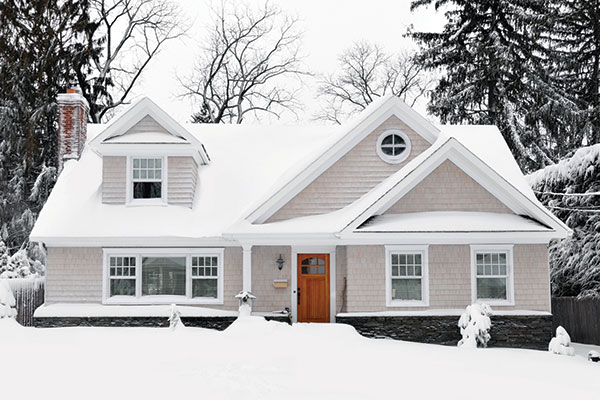Blog
Stay Warm and Save Money This Winter with These DIY Heating and Weatherization Tips

Winter is approaching and we’re all looking for ways to stay warm and save money this winter. Here are some do-it-yourself heating and weatherization tips that may help:
Heating
Clean boilers and furnaces. Make sure your boiler or furnace is cleaned and serviced annually by qualified personnel for optimum efficiency. Cleaning makes the heating system safer and much more efficient, and helps it last longer.
Use only the heat you need. If your home has zone heating, be sure to heat only the smallest zone possible. If you’re using one zone, consider turning down thermostats and closing registers in vacant zones, taking precautions to avoid frozen pipes.
Turn down your manual thermostat. Consider turning down your furnace or boiler thermostat to 55 degrees when your home is unoccupied. For sleeping, consider setting your thermostat to 60 degrees.
Reflect heat from radiators. If your home has radiators, place heat-resistant reflectors between radiators and walls to heat the room instead of the wall.
Use the fireplace damper correctly. Properly close the flue damper of your fireplace when you’re not using it. This will prevent warm indoor air from escaping in winter. Make sure that any fire is totally out before closing down the damper of your fireplace and also confirm there are no glowing embers to reduce the risk of your home filling with carbon monoxide and other pollutants.
Choose efficient circulator pumps. If you have a hydronic (often referred to as “forced hot water”) heating system and have to replace circulator pumps, consider Electrically Commutated Motor (ECM) pumps, which can reduce operating cost by 85% because their motors adjust their speed to match the load. They also tend to be more reliable than traditional circulator pumps.
Set your programmable thermostat. Programmable thermostats run automatically and can adjust the temperature on their own based on the time of day or day of the week. This can help your home use less energy when it is unoccupied or at night while you sleep.
Consider a smart thermostat. Compared to conventional thermostats, smart thermostats are more accessible and more convenient. Some smart thermostats can detect your presence in a room and can adjust the temperature accordingly. They can be controlled via any smartphone, so you can easily turn the temperature up or down depending on your comfort level.
Weatherization
Add layers to the windows. To reduce heat loss in winter, install transparent plastic window film, indoor window inserts, or storm windows. When purchasing windows, look for ENERGY STAR®-certified models designed for Maine’s climate.
Check floor vents and registers. Make sure that vents and floor registers are well sealed where they meet with the wall or floor. Make sure all ducts are tightly connected and all vents and floor registers are clear of furniture or rugs that could impede airflow.
Use weather stripping. Keep out cold drafts in winter by using weather stripping, which will help seal closed windows and doors.
Install a door sweep. Consider installing a door sweep on the bottom edge of the door between heated and unheated areas like the garage, bulkhead, and basement door (if it’s not an exterior door with a threshold and weather stripping).
Try caulk or spray foam. To make a room warmer in winter, try air sealing with caulk, spray foam, or both. Spray foam insulation and caulk will fill cracks and gaps where air can seep between outdoors and indoors.
Seal receptacles and switch boxes with foam gaskets. Installing foam gaskets can reduce drafts and create an extra thermal barrier.
Adjust window treatments. During the day, let sunlight in by opening curtains, blinds and shades on the windows facing the sun to reduce heating demand. At night, keep drapes and curtains closed to reduce heat loss.
You can find a copy of these tips and more on our Energy & Money Saving Tips webpage. Download your copy here.
Other helpful heat season resources:
Check out our $100 DIY Winter Prep Rebate, which will reimburse Maine homeowners up to $100 toward the purchase of select weatherization and insulation products.
If you own a heat pump, check out our Heat Pump User Tips.
Electricity Monitor kits and educational materials are available at more than 60 of Maine’s libraries from Kittery to Fort Kent. Check one out today to help monitor, measure, and manage your electricity consumption. Learn more here.
To subscribe to Efficiency Maine’s blog page, please click here.
